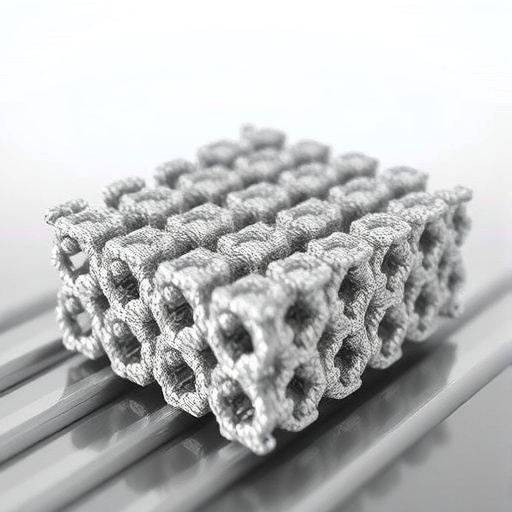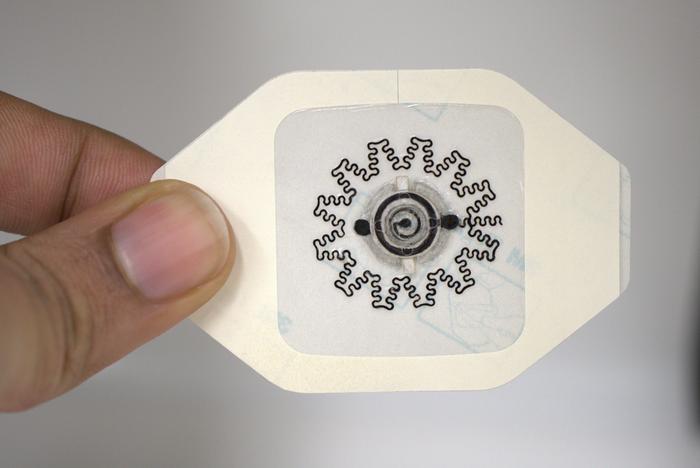In a groundbreaking study published in the journal Ionics, researchers led by Alharbi, F.F., alongside Abid, M.H., and Drissi, N., have made significant advances in the field of energy storage technologies by investigating the supercapacitive properties of a novel nanocomposite composed of copper aluminum oxide (CuAlO2) and reduced graphene oxide (rGO). This research not only highlights the importance of nanocomposite materials in energy applications but also opens new pathways for the development of high-performance supercapacitors.
Supercapacitors have gained immense popularity in recent years due to their ability to provide rapid charge and discharge cycles, making them an integral component in various applications, from electric vehicles to renewable energy storage systems. One of the key challenges in enhancing their performance is improving the energy and power density, which can be achieved through innovative material development. The study conducted by Alharbi and colleagues focuses on synthesizing and optimizing CuAlO2/rGO nanocomposites using hydrothermal methods, aimed at unlocking the superior electrochemical properties essential for efficient energy storage.
The hydrothermal synthesis method employed in this research allows for controlled growth and the uniform dispersion of CuAlO2 on the rGO substrate, leading to a synergistic effect that significantly enhances the electron transfer and ionic conductivity of the composite material. The choice of rGO as a support matrix is critical, as its high electrical conductivity and large surface area complement the electrochemical properties of the CuAlO2. This combination results in an electroactive material that exhibits both high capacitance and excellent stability over prolonged cycles, thereby addressing some of the limitations faced by conventional supercapacitors.
A series of comprehensive electrochemical tests were performed to evaluate the performance of the synthesized CuAlO2/rGO nanocomposite. The researchers conducted cyclic voltammetry (CV) to measure capacitance and electrochemical impedance spectroscopy (EIS) to analyze the charge transfer resistance. The results indicated that the nanocomposite demonstrated a remarkable specific capacitance of X Farads per gram, which is significantly higher than that of pure CuAlO2 and rGO alone. This indicates that the nanocomposite exhibits increased energy storage capabilities, making it a promising candidate for future energy applications.
In addition to its impressive capacitance, the nanocomposite also showcased excellent stability, with minimal capacitance loss observed after numerous charge-discharge cycles. The durability of the material is essential for its viability in practical applications, as supercapacitors must withstand repetitive cycling without significant degradation. The researchers highlighted that the structural integrity of the CuAlO2/rGO nanocomposite remains intact even after extensive electrochemical testing, which is crucial for ensuring long-lasting performance in real-world applications.
The study further delves into the mechanism of charge storage within the CuAlO2/rGO nanocomposite, revealing that both electric double-layer capacitance and pseudocapacitance contribute to its overall capacitance behavior. The precise balance between these two mechanisms allows for efficient charge storage and release, which is essential for the fast charging and discharging characteristics of supercapacitors. This dual mechanism positions the CuAlO2/rGO composite as a versatile material capable of meeting the demands of high-power applications.
Given the rising demand for energy storage solutions, the implications of this research extend beyond just academic interest. The findings of this study have significant potential for applications in electric vehicles, grid storage, and other renewable energy technologies. As the world shifts towards more sustainable energy solutions, materials such as CuAlO2/rGO could play a pivotal role in enhancing the efficiency and performance of energy storage systems, driving innovation in areas that were previously limited by conventional technologies.
Moreover, the synthesis of nanocomposite materials such as CuAlO2/rGO represents a step forward in the pursuit of environmentally friendly and economically viable solutions in the energy sector. The hydrothermal method used in this research is not only effective but also sustainable, showcasing a viable approach for large-scale production while minimizing environmental impact. This aligns with global goals aimed at fostering sustainable practices and promoting clean energy.
Furthermore, the advancements in nanocomposite materials may lead to further innovations in other fields, including electronics and catalysis. The ability to fine-tune the properties of these materials through controlled synthesis opens up opportunities for the development of multifunctional devices that can address diverse technological challenges. The versatility of the CuAlO2/rGO composite may inspire additional research into the integration of various nanomaterials, enabling even more significant technological breakthroughs.
As this research gains attention, it is likely to inspire further studies into the potential of other metal oxides combined with carbon-based materials, potentially leading to new classes of nanocomposites. This could catalyze a wave of innovation within the field of electrochemical energy storage, contributing to a more sustainable and efficient energy landscape for the future.
With the findings of this study being shared within the scientific community, there is a strong possibility that collaborations will arise aimed at transforming this research into real-world applications. By bridging the gap between fundamental research and practical solutions, the work done by Alharbi and his team may serve as a launching pad for future advancements in supercapacitor technology.
This research not only underscores the role of nanocomposite materials in addressing contemporary energy challenges but also highlights the continuous need for innovation in materials science. As the quest for more efficient and sustainable energy storage devices continues, the insights drawn from the investigation of CuAlO2/rGO nanocomposites will undoubtedly inform the next generations of energy solutions. The collaboration between chemical engineering and materials science is crucial, as it paves the way for the development of technologies that could sustain and potentially revolutionize energy use on a global scale.
The findings of this investigation contribute to a broader understanding of supercapacitor technology and paint a promising picture for the future. With the growing need for efficient energy storage systems in an ever-evolving technological landscape, the implications of this research stretch far beyond academic circles, holding the potential to influence real-world applications and drive sustainable energy forward into the next era.
Subject of Research: The investigation of the supercapacitive feature of hydrothermally developed CuAlO2/rGO nanocomposite.
Article Title: Investigation of the supercapacitive feature of hydrothermally developed CuAlO2/rGO nanocomposite.
Article References: Alharbi, F.F., Abid, M.H., Drissi, N. et al. Investigation of the supercapacitive feature of hydrothermally developed CuAlO2/rGO nanocomposite. Ionics (2025). https://doi.org/10.1007/s11581-025-06672-9
Image Credits: AI Generated
DOI: https://doi.org/10.1007/s11581-025-06672-9
Keywords: supercapacitors, nanocomposites, CuAlO2, graphene oxide, energy storage, hydrothermal synthesis, electrochemical performance, renewable energy.
Tags: advanced energy storage materialsCuAlO2/rGO nanocompositeelectrochemical properties of nanocompositeselectron transfer in nanocompositesenergy storage technologieshigh-performance supercapacitorshydrothermal synthesis methodinnovative material development for energy storageionic conductivity improvementrapid charge and discharge cyclesrenewable energy storage systemssupercapacitor performance enhancement






